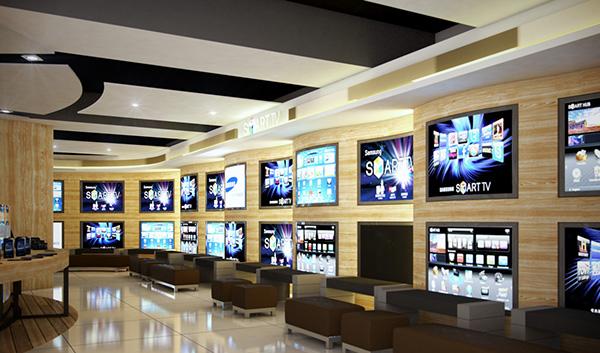Reopening Guidance for the A/V Shopper

TV Shopping Takes a Hit… Unless you’re Amazon, this virus has been a serious blow to the consumer electronics market. My local Best Buy, for example, now does only pre-order with drive-up curb delivery. That’s an awkward way to buy a TV. But some dealers (particularly Amazon) do have generous return policies if you’re unsatisfied with a purchase. While returning a TV is awkward, it’s possible even for an on-line buy. But you should confirm the current policy of your on-line source before making a commitment.
I’m reminded of a policy that once existed at Costco. A few years ago it had virtually no limit on returns. Clever (but disreputable) buyers would buy a set, keep it for a year, then return it in exchange for the next year’s model. Costco eventually closed that loophole by limiting the return window.
You might well find that most of the TVs for sale today are 2019 models. As noted in an earlier blog, 2020 sets will likely be relatively scarce until the supply chains are sorted out.
Once the fog clears, however, I assume most readers are aware that relying on a TV purchase solely through a showroom demo, in any showroom, is dicey at best. You can learn something there about how comfortable you are with the on-screen menus, the remote, and the set’s smart features. But the picture you’ll see in a showroom will be anything but ideal. The TVs there are invariably set to Vivid mode, on the (proven) theory that for most buyers, who are typically uninformed about TVs, the brightest set that fits their budget is the one they’ll chose.
Fortunately, a TV is one home theater product about which equipment reviews can offer information unavailable in the showroom. And I don’t mean only our reviews. The more reviews you can find about the set(s) you’re interested in, the better. This might also be a slow slog these days; it’s likely that 2020 review samples will also be limited. But so far we’re doing okay. My review of LG's new 65GX OLED TV posted recently, another new review is in progress, and a third set is expected soon.
Subwoofers… Do you even need a subwoofer? Silly question, unless your home theater appetites are limited to dramas and romantic comedies. And even there you might find an explosion or two. Wasn’t there a firefight in Pretty Woman? I thought so.
But how big a subwoofer do you need and how many? Other questions you need to ask for each subwoofer on your wish list are How Small, How Deep, and How Affordable? You can have any two, but not all three.
Two subwoofers are nearly always superior to one. They might go no louder or deeper, and could well cost more than a single, bigger sub, but when properly-positioned they’ll do a better job of distributing uniform bass throughout the room. See my recent post Subwoofer Setup: How to Get Great Bass in 3 Steps for more detail.
Subwoofer reviews can be helpful, but always keep in mind that the room is the single most important component in any audio system, particularly when it comes to bass. A subwoofer review will tell you how the subwoofer(s) sounds in the reviewer’s room, but not in yours. Some form of room correction (equalization), particularly in the low to mid-bass, can help with this, but it’s often avoided in reviews for religious reasons. But never forget that the room dominates a system’s bass response. No subwoofer review is useful unless it also mentions the characteristics, including the size, of the reviewer’s room.
Cables… I’m wandering into a rat’s nest here. No audio subject generates more heated opinions than this (though both digital vs. analog and tubes vs. solid state come close).
Here I’ll address analog line-level and speaker connections only. Can such cables sound different? I have heard cable differences myself, though the engineer in me fights to deny it. Audio cable promotions are ripe with pseudo-science, and measurements, within certain parameters, can’t show why two cables might sound different. Those parameters include cable length and how the only significant characteristics of all audio-frequency cables resistance, capacitance, and inductance might interact with what’s on either end of the cable. That is, the source and the load.
If you’re shopping for a full system the sales associate may well try to top off the sale with a few hundred (or a few thousand) dollars in specialty cables. I can’t fault the retailer for wanting to pay the bills, keep the lights on, and make a decent living from working in a field he’s passionate about. The latter is almost always true of small audio stores, and indeed of other small, specialty businesses of all descriptions.
But if this is your first, serious audio or home theater system I’d start modestly with cables, perhaps no more than $300-$500 for the entire system. And if even that means the difference between affording the primary system components or not, there’s always Home Depot seriously. Budget-priced 10- or 12-gauge speaker cable at hardware store prices can be cut to size. At some point you might want to experiment with boutique cables (hopefully with a return policy), but that can come later.
























































